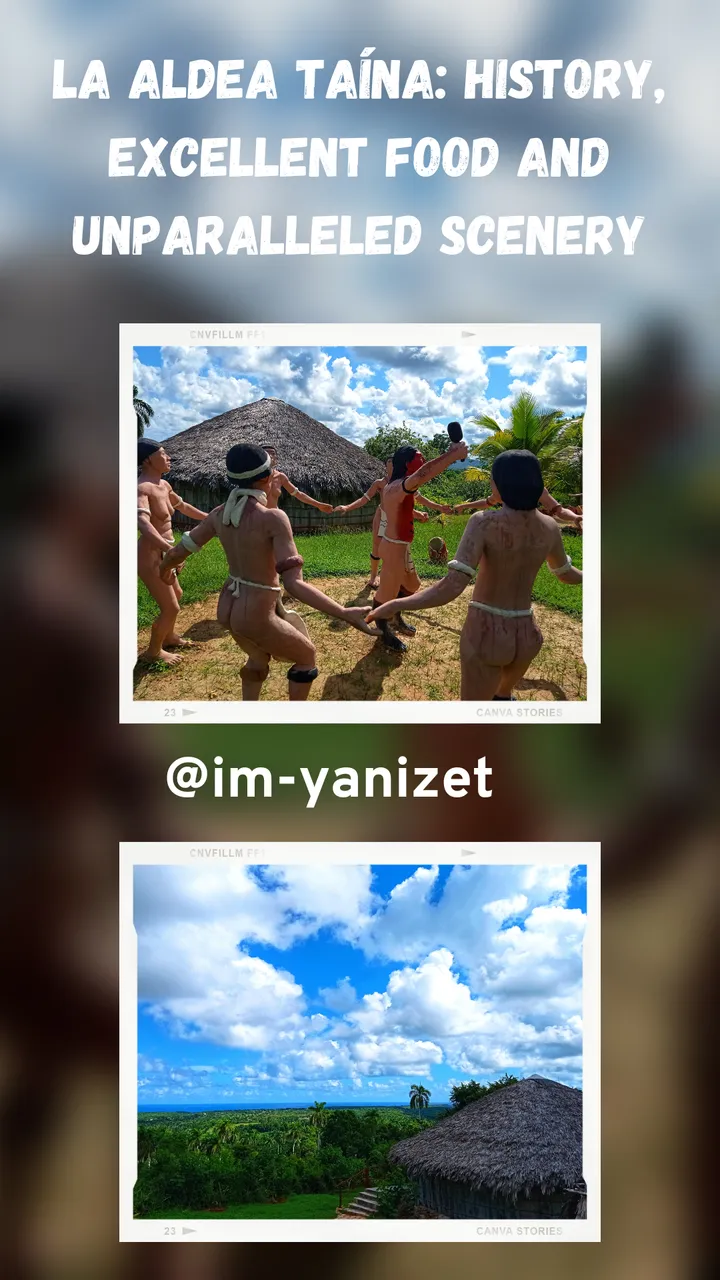
Hello dear community, lover of travel, history and beauty. Today I bring you my experience in La Aldea Taína, located in front of the museum of Chorro de Maíta, Banes, Holguín, Cuba, it is a reproduction of the village that was located around more than 500 years ago. It is conformed by houses and figures that reproduce the aboriginal life of those years. Founded on August 13, 1998, created under a rigorous study by Dr. Guarch, who wanted to symbolize the lifestyle of our aborigines.
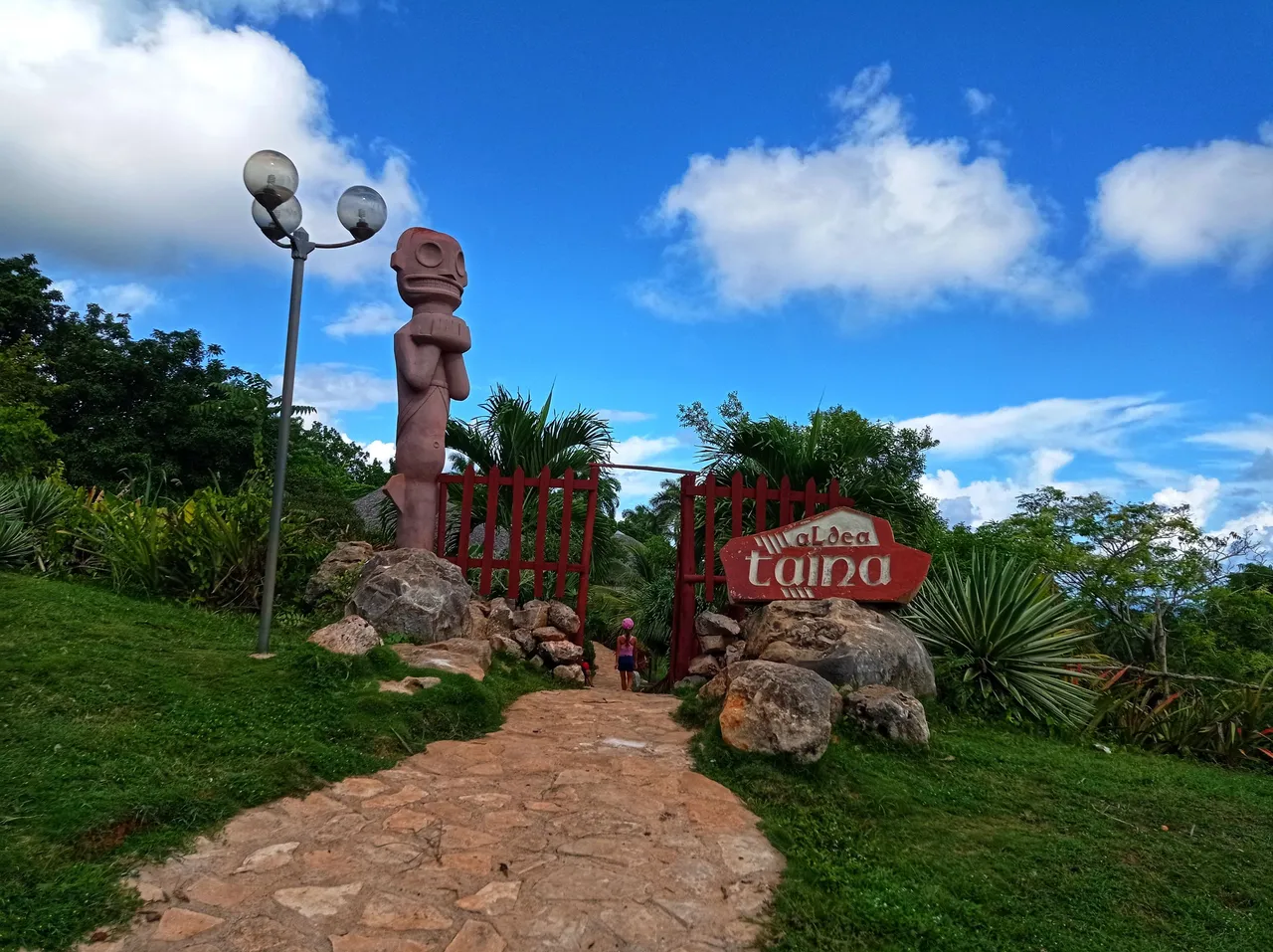 | 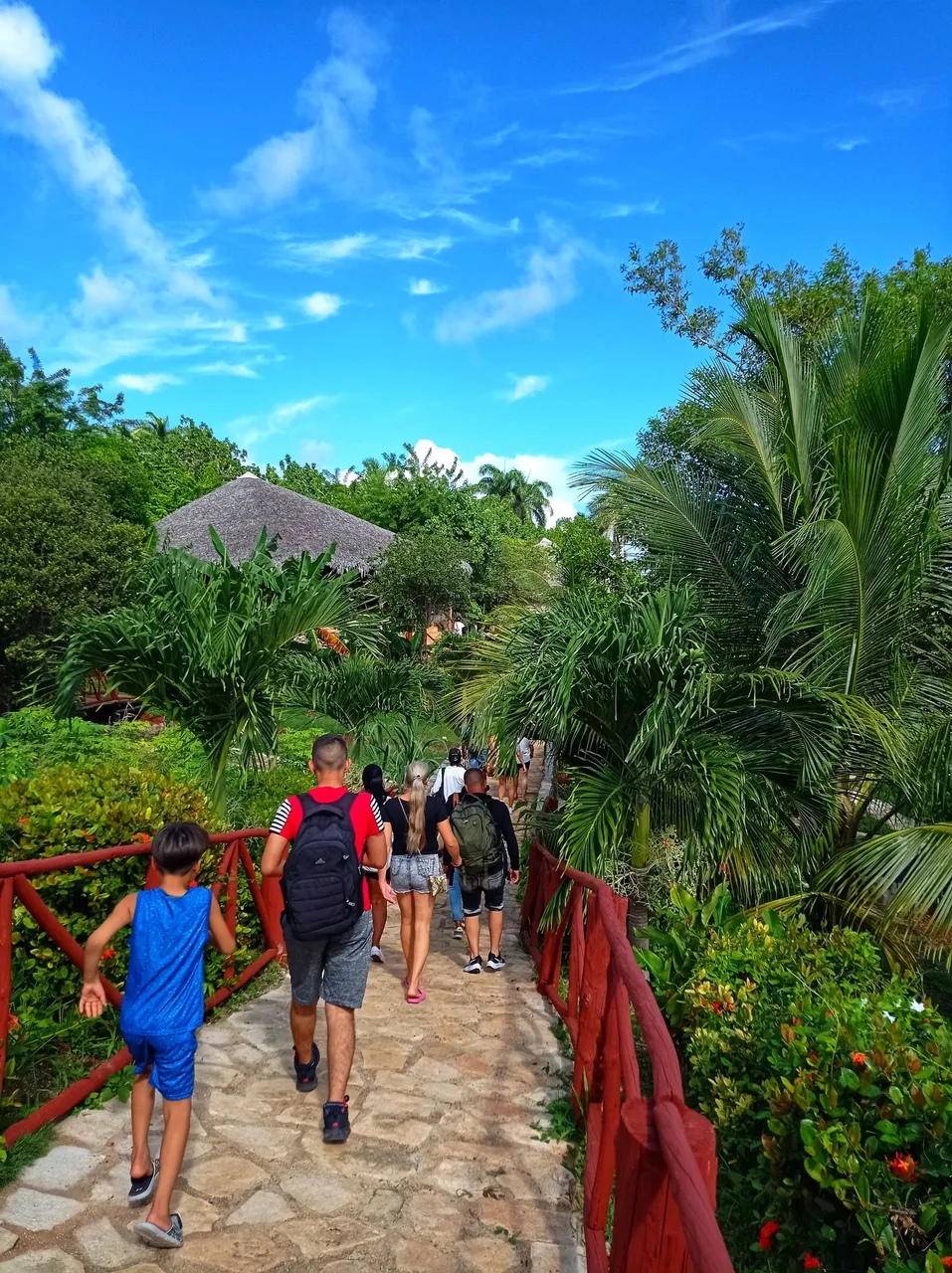 |
|---|
From the moment you enter the place you feel a unique atmosphere, surrounded by nature and with a spectacular view of the sea, a breeze of fresh air and an unparalleled tranquility.
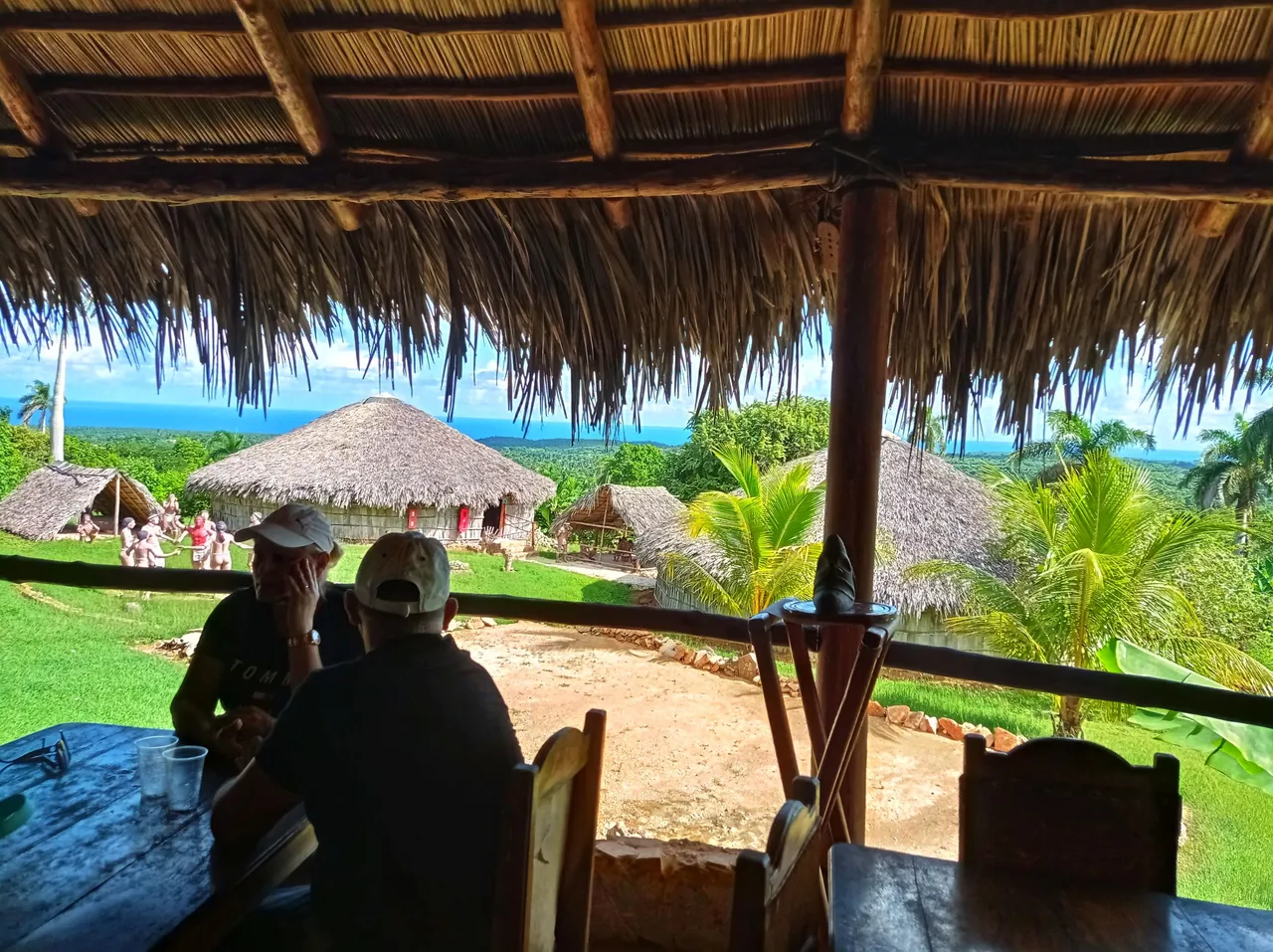 |  |
|---|
It has a rustic country style restaurant, with a bar where you can enjoy a variety of cocktails, and a lunch made with charcoal, with offers of typical dishes of the area, with excellent flavor and quality, with a unique presentation, in dishes and glasses made of clay, where you can also enjoy a rich coffee.
 | 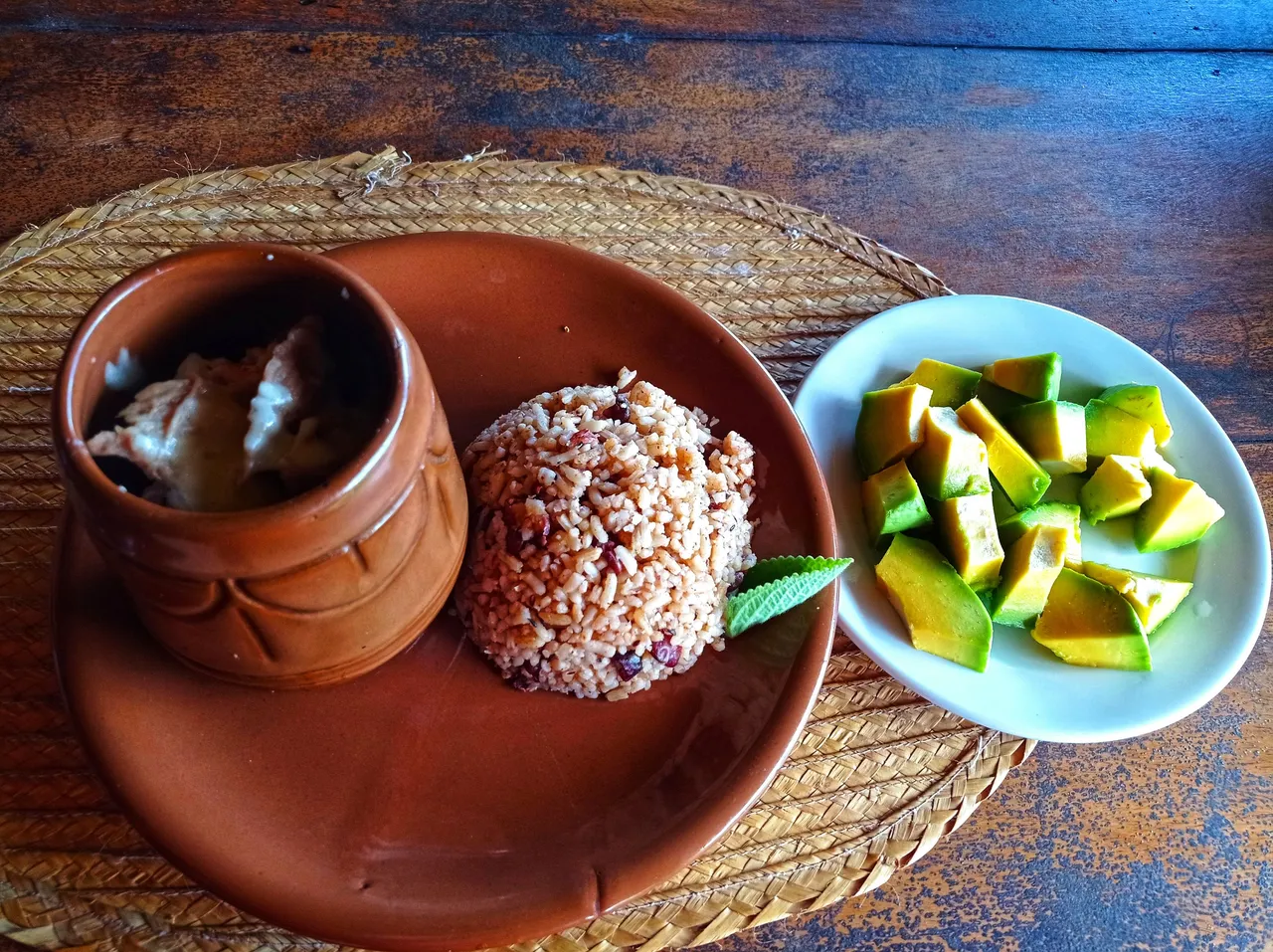 |
|---|
Then you can enjoy the main attraction of the place, a guided tour of the village, where you will learn all about the place with visual aid. First, we observe the Conuco, where they made their crops, having mounds of earth, using the Coa, instrument, and the main food was the cassava, to make cassava.
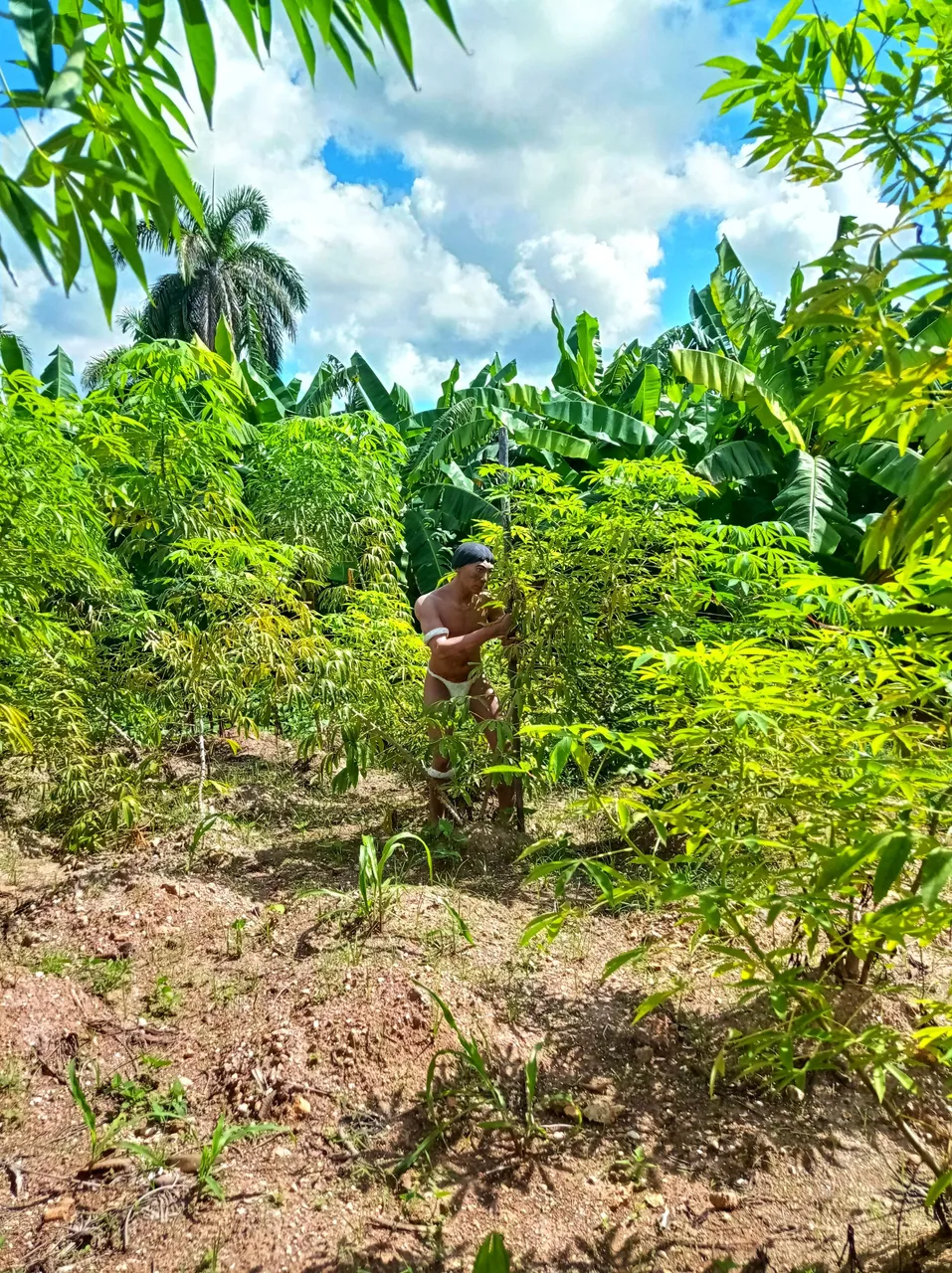
Then we see the Caney, housing of the aborigines, made of palm, with good resistance to rain and strong winds, hence the circular shape it had. The first caney we visited was the house of the casique, chief of the tribe, with his wives, he had several because he was the chief of the tribe.
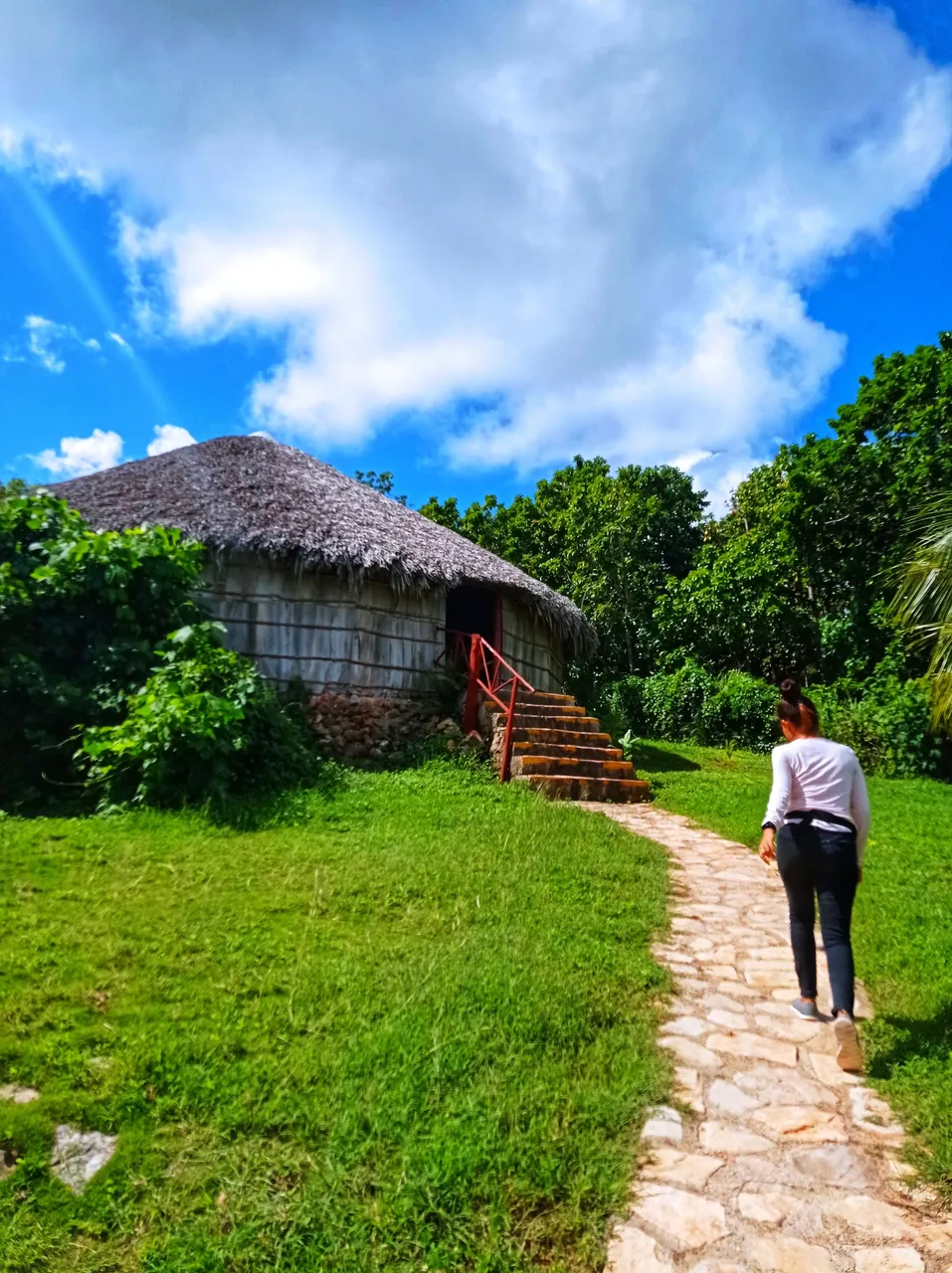 | 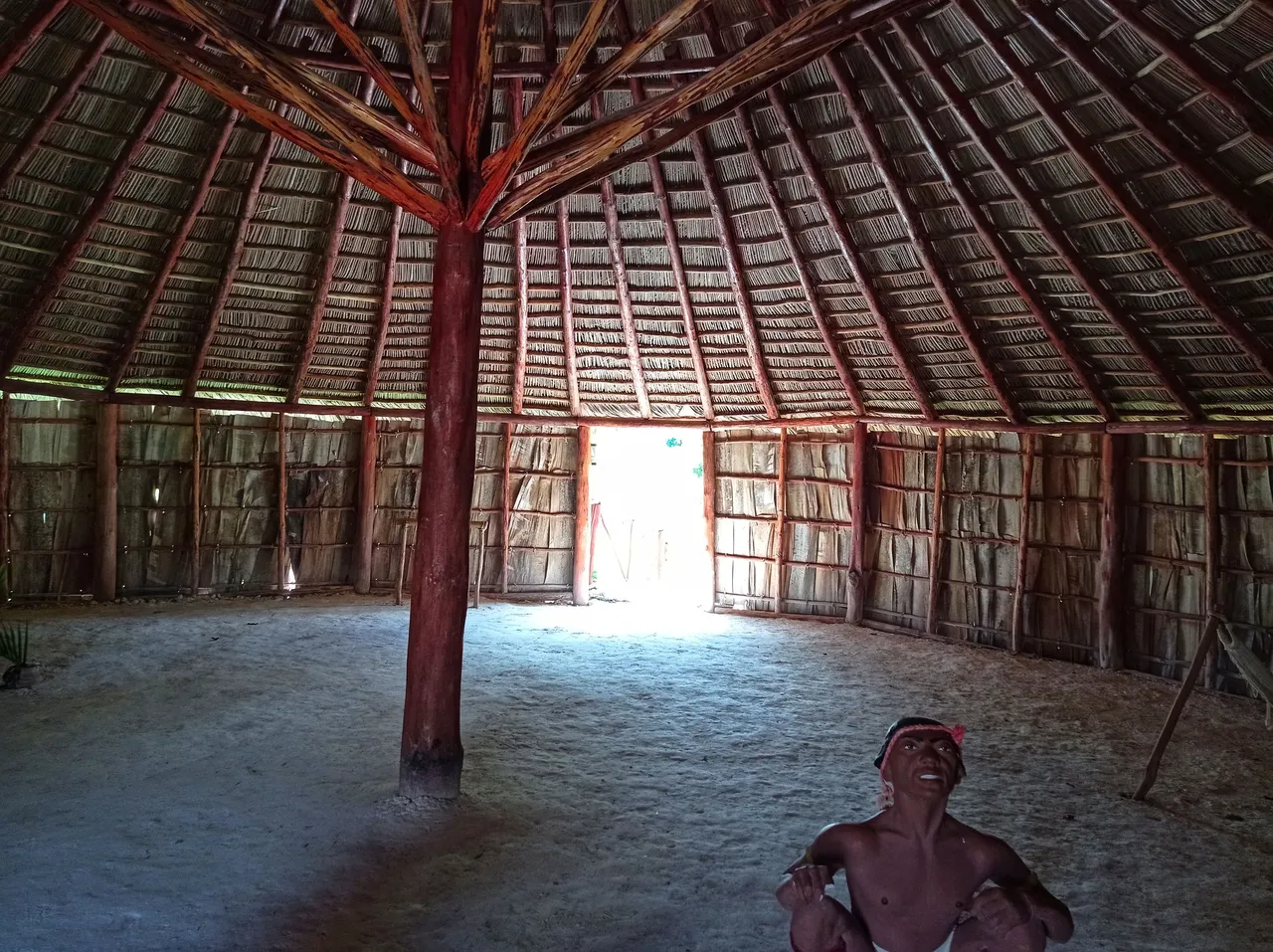 |
|---|
In its interior we can observe the idol of the cotton tree, it was a funeral tradition, when an important person in the village died, his remains were placed inside the caney, they did not have the custom of incinerating, they were very peaceful people, they buried them, and after a while they removed the skull and bones. They offered them fruits and vegetables in the front, because it represented the face of life and good things, and in the back, there was the face of death, which represented bad things.
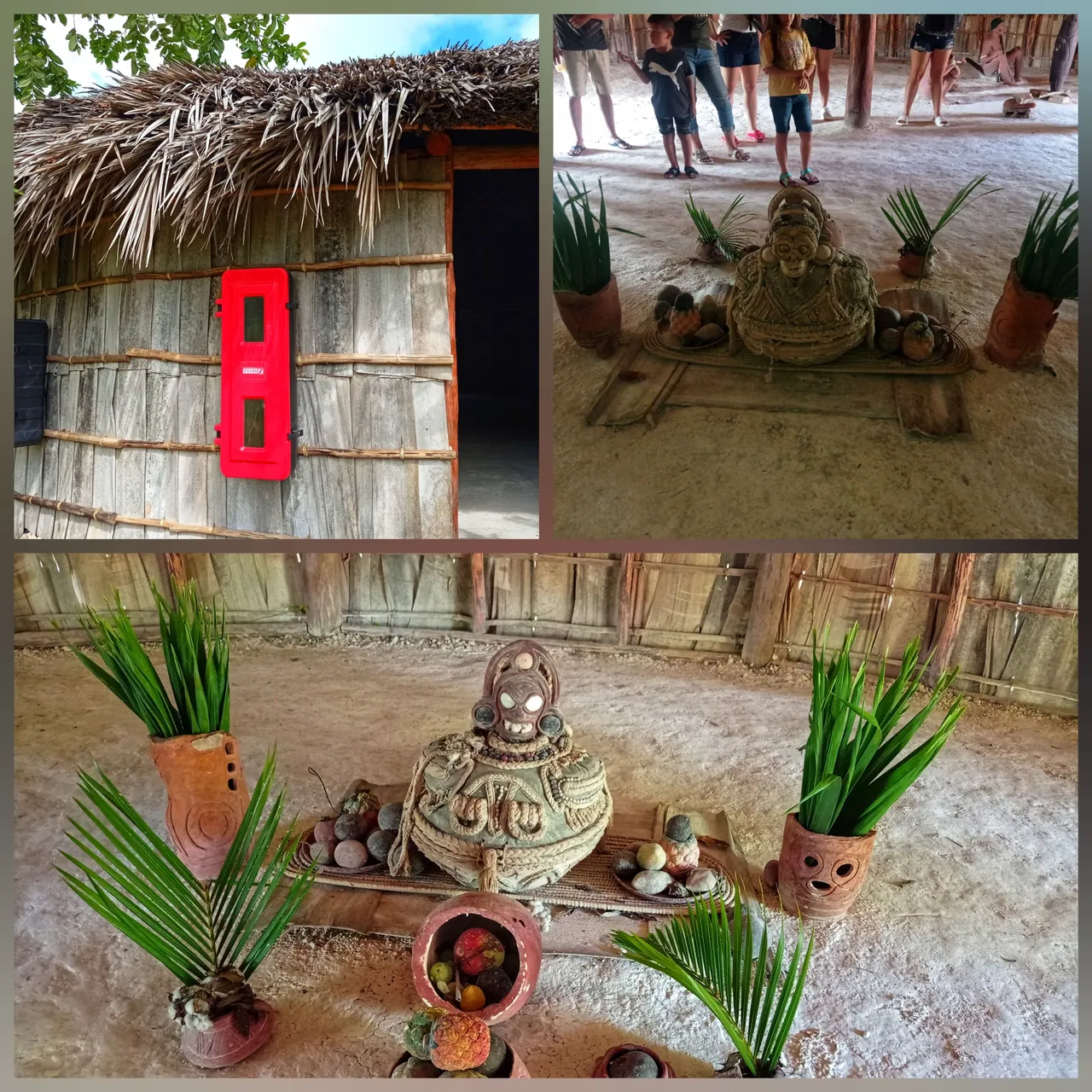
Another important representation that we can observe is the ritual of cohíba, where the fundamental members of the tribe participated, cacique, shaman and two old members, important family heads, where they macerated tobacco leaves, mixed them with a hallucinogenic plant, called clarín, inhaling it through the mouth and nose at the same time, in a state of hallucination they communicated with the gods and made petitions for the village.
 | 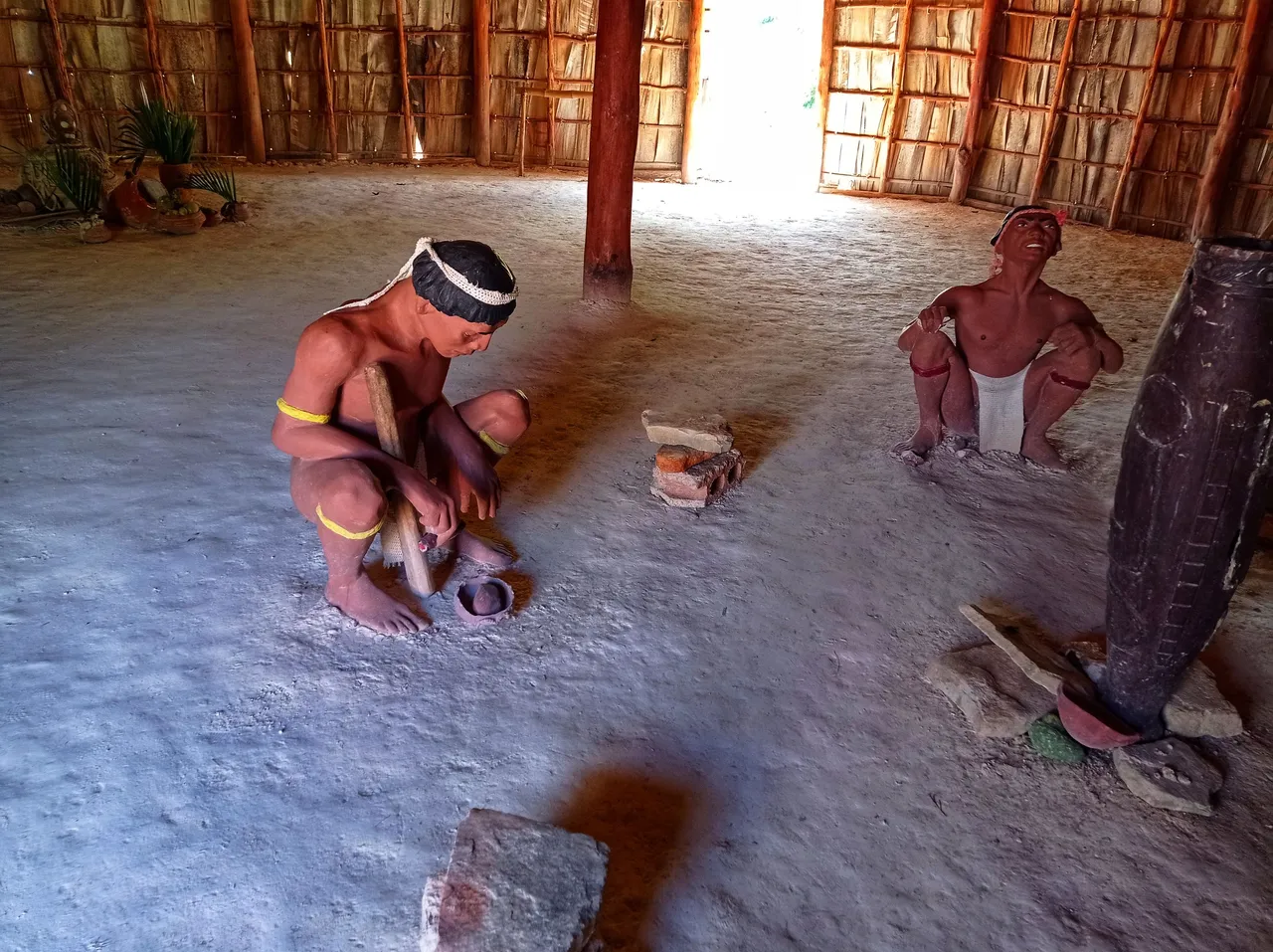 |
|---|
Next we see the bajareque of the cassava, where the whole process of making cassava was carried out, an activity that only women and children performed. The cassava was scratched with a shell, the juice was extracted, which the children did with the cibucan, an object that can be seen in the center, the mixture was flattened with a stone and the process was finished in the fire in the buren. When a woman was menstruating, a cotton thread was tied around her waist, indicating that she was of fertile age, ready to marry and procreate. Bachelors were naked and once married, men began to wear loincloths and women wore petticoats.
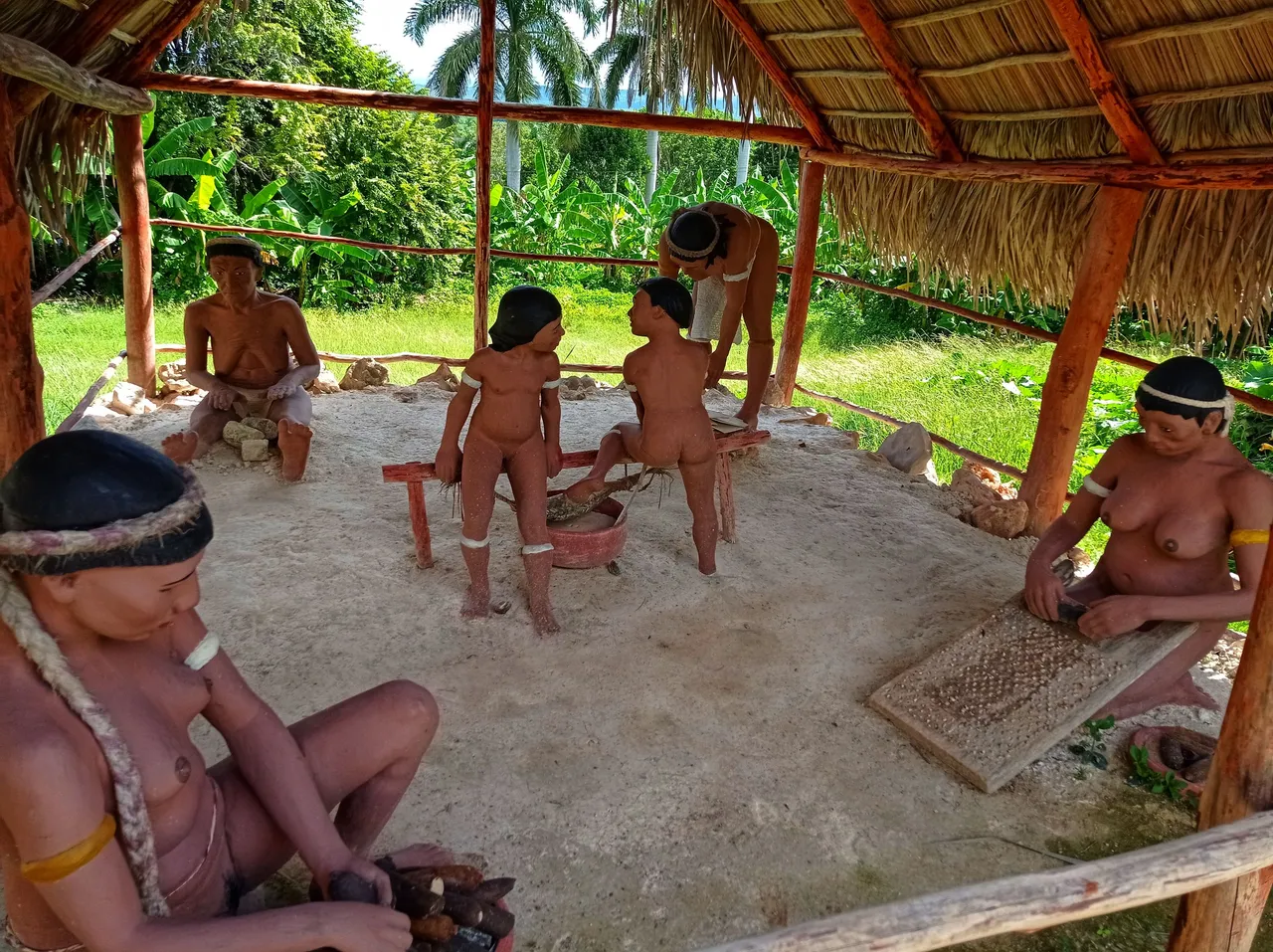 | 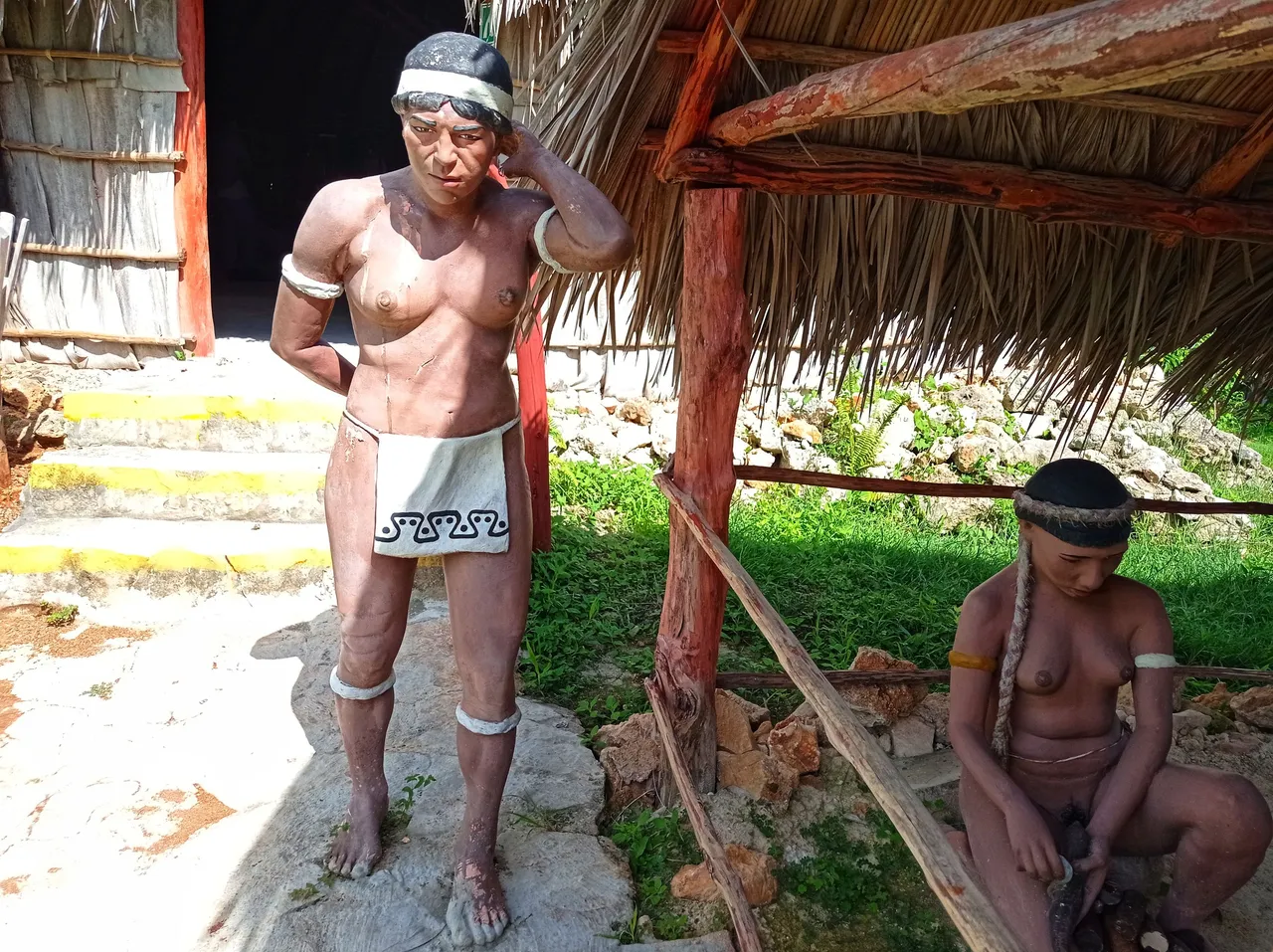 |
|---|
Then we observe the dance area of the areita, where the rain god was invoked, or to celebrate marriages, births or healing rituals.
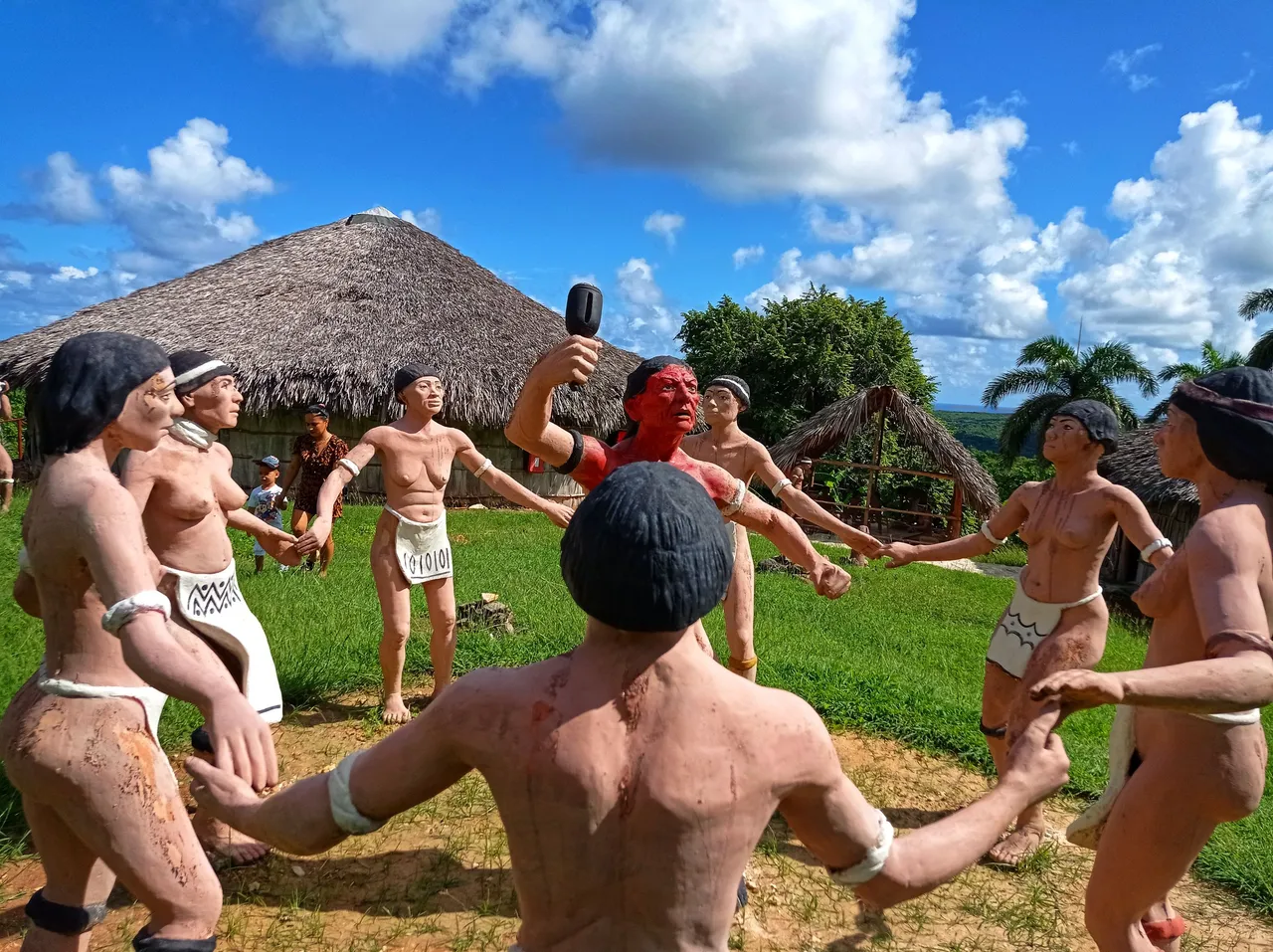 | 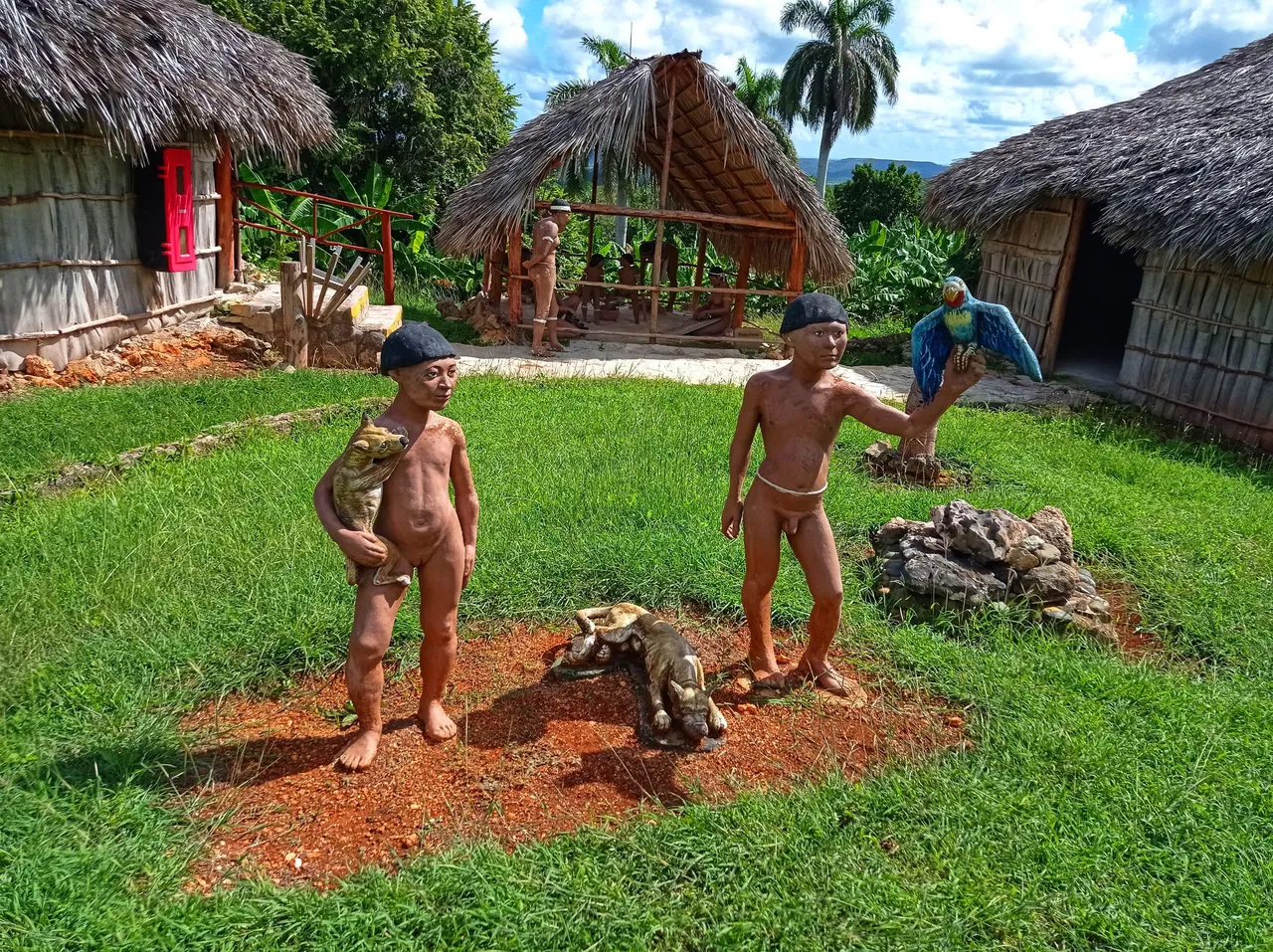 |
|---|
Then we see the Batey, where they played the game of bato, very similar to baseball, the ball was made with tree resin and was hit with the elbows, the waist or a macana, a kind of bat.
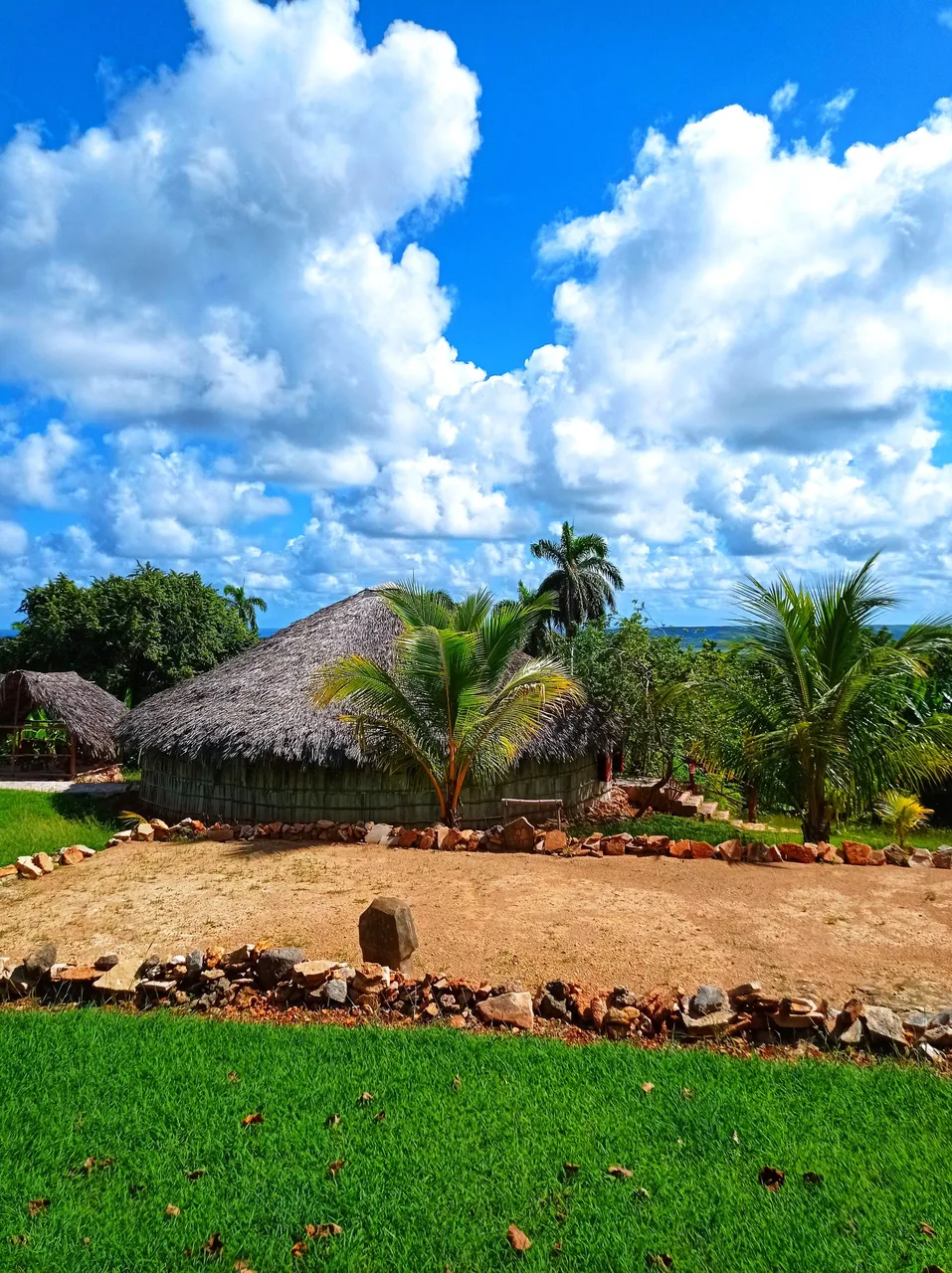
Next we observed another caney, where daily life was represented, inside there were around 20 people living in each caney and there were up to 3 generations of the same family. When a baby was born, the mother would customarily tie a strong material to deform the forehead from birth to two years of age, leaving it flattened, it was a symbol of beauty, and the method to identify themselves from other aruhaca tribes living in the territory.
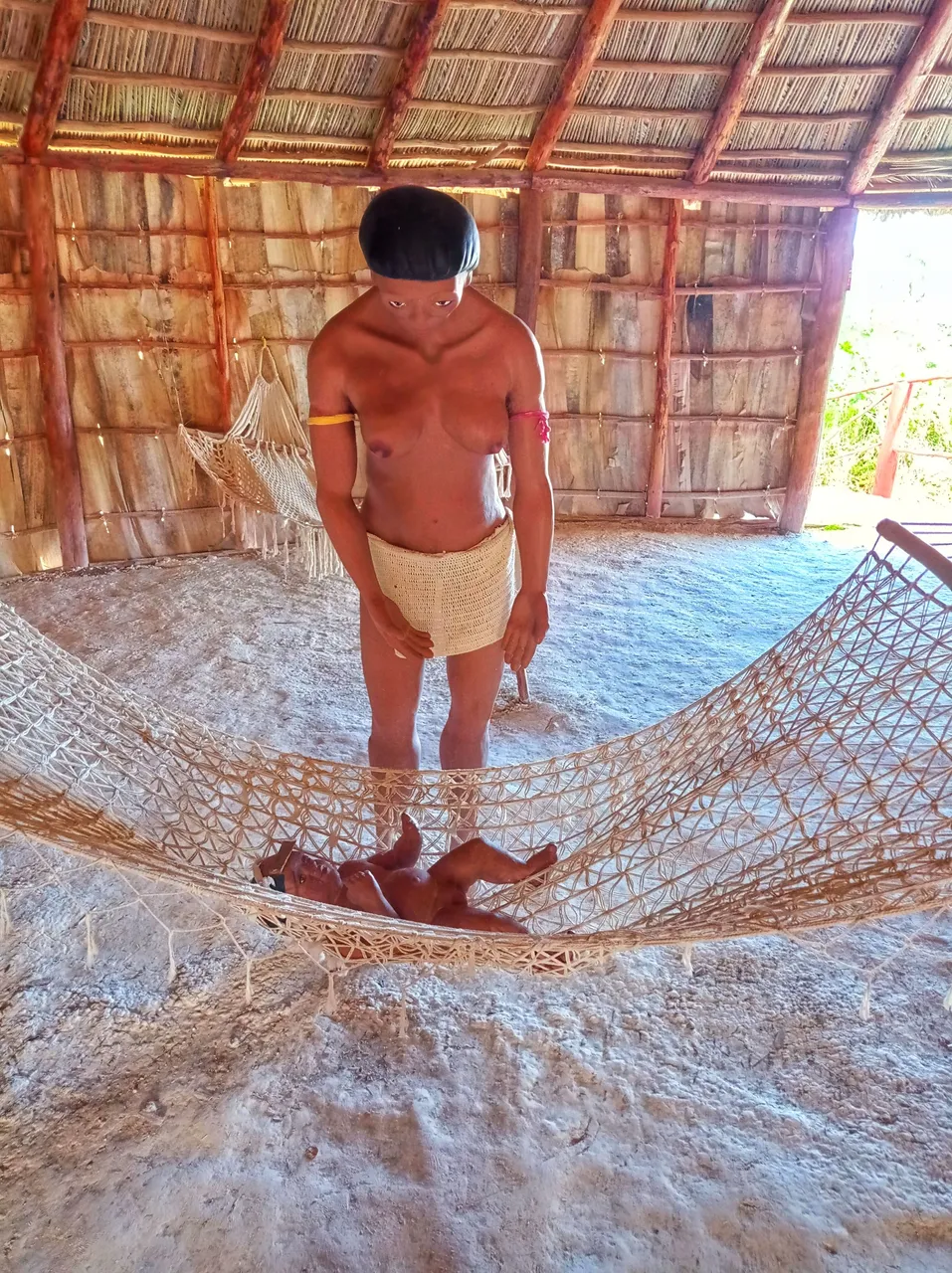 | 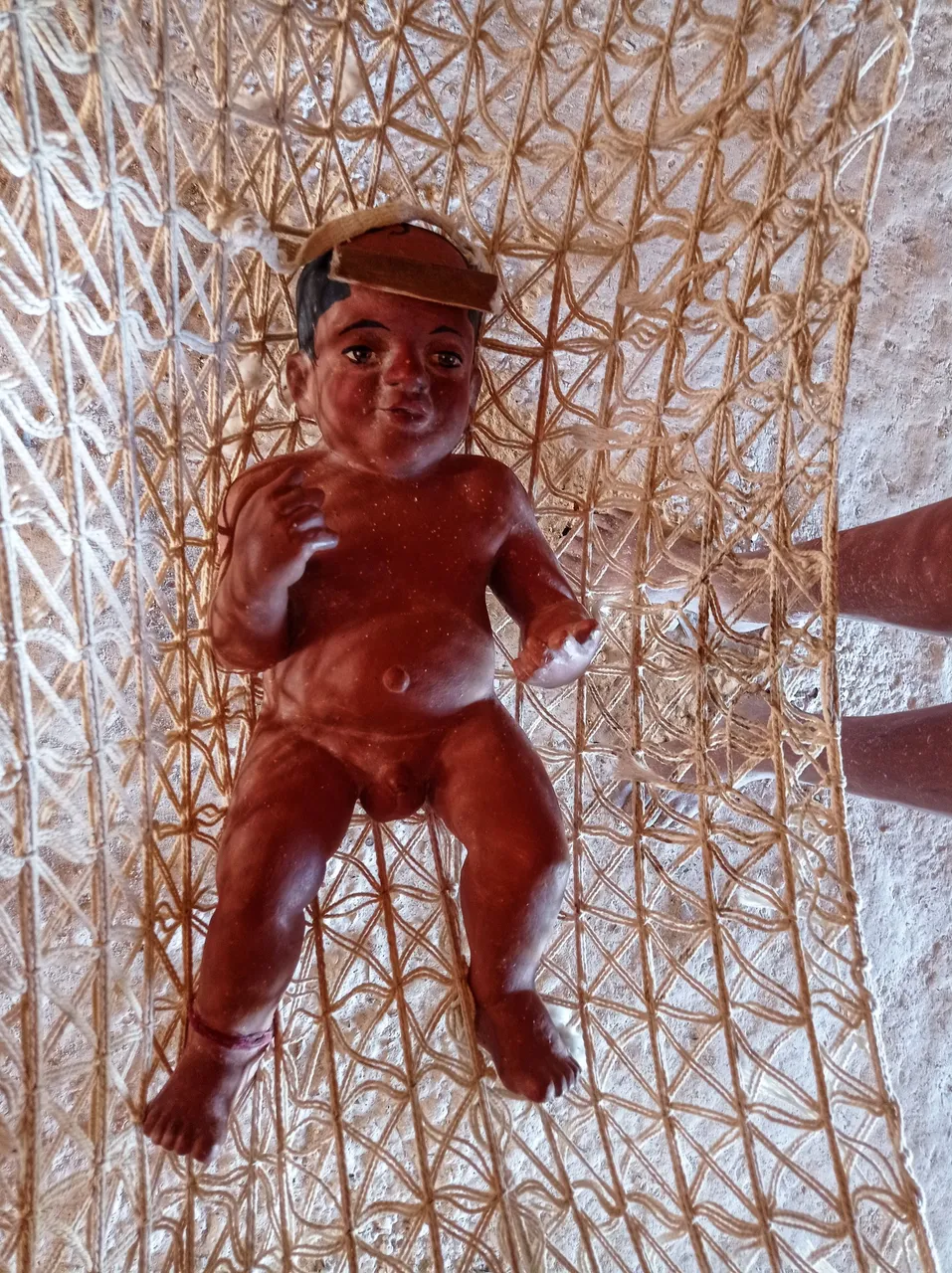 |
|---|
The next caney is the representation of the tribe's hospital, where the shaman lived and worked. In this place a show is enjoyed, where the artists of the place represent the aborigines and perform the typical dance and make the public participate, resulting in a fun and unique moment.
 | 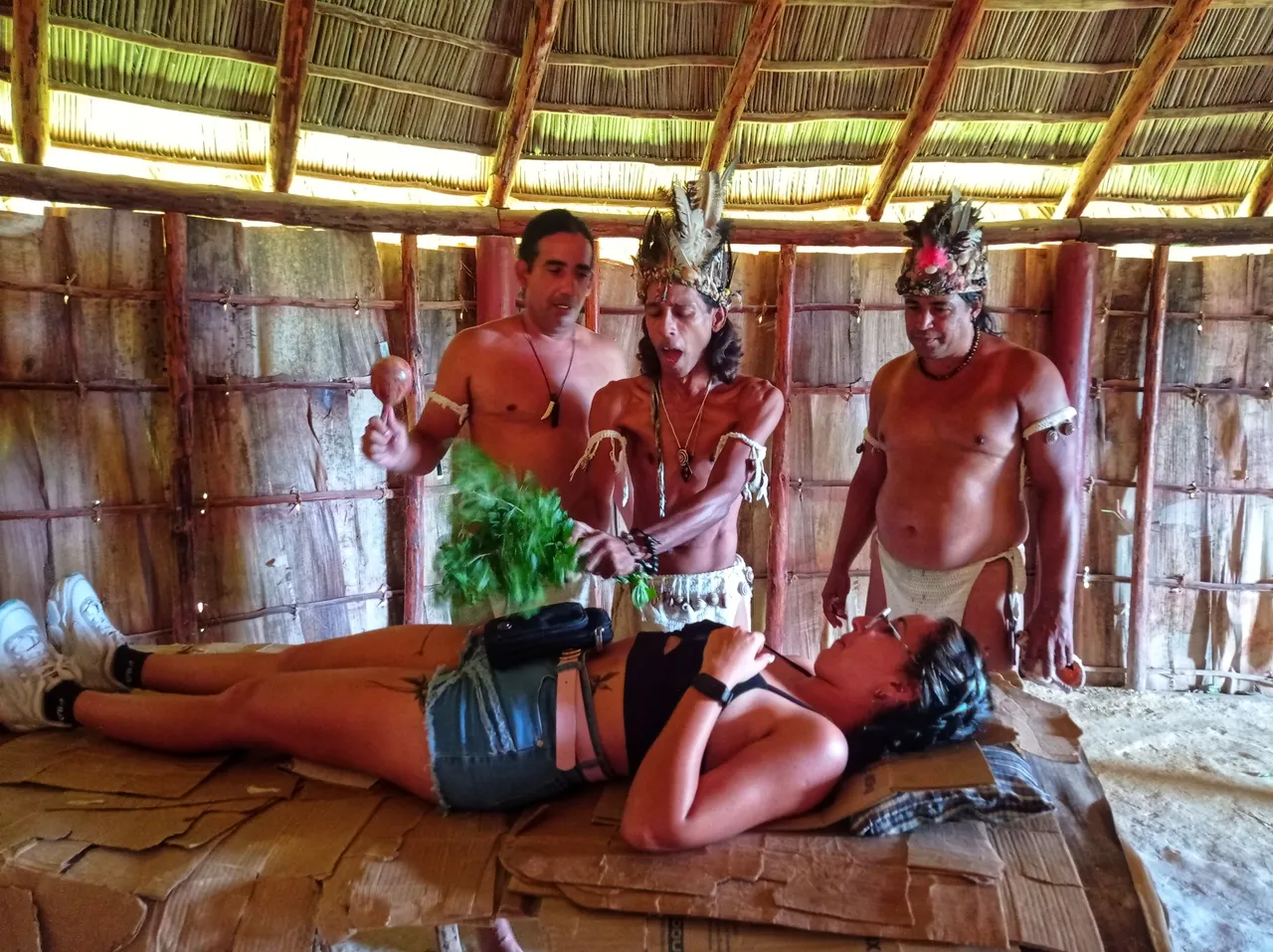 |
|---|
As you have been able to observe and read, it is a place that you can not miss, you will learn and enjoy good food, and above all a landscape that should be treasured.
Versión Español
Hola querida comunidad, amante de los viajes, la historia y la belleza. Hoy les traigo mi experiencia en la Aldea Taína, ubicada frente al museo del chorro de Maíta, Banes, Holguín, Cuba, se trata de una reproducción de la aldea que se ubicó alrededor de más de 500 años atrás. Se encuentra conformada por viviendas y figuras que reproducen la vida aborigen de esos años. Fundada el 13 de agosto de 1998, creada bajo un estudio riguroso por parte del doctor Guarch, que quiso simbolizar el estilo de vida de nuestros aborígenes.
Desde que entras al lugar sientes un ambiente único, rodeado de la naturaleza y con una vista espectacular hacia el mar, llegando una brisa de aire puro y una tranquilidad inigualable. Cuenta con un restaurante estilo campestre y rústico, con un bar donde puedes disfrutar cocteles variados, y de un almuerzo con hecho al carbón, con ofertas de platos típicos de la zona, con excelente sabor y calidad, con una presentación única, en platos y vasos hechos de barro, donde también puedes disfrutar de un rico café.
Luego puedes disfrutar del principal atractivo del lugar, un recorrido guiado por la aldea, donde aprenderás todo sobre el lugar con la ayuda visual. En primer lugar observamos el Conuco, donde realizaban sus sembrados, habiendo montículos de tierra, utilizando la Coa, instrumento, y el alimento principal era la yuca, para hacer el casabe.
Después vemos el Caney, vivienda de los aborígenes, hecha de palma, con buena resistencia a las lluvias y fuertes vientos, por eso la forma circular que tenía. El primer caney que visitamos era la casa del casique, jefe de la tribu, con sus esposas, tenía varias por ser el jefe de la tribu.
Otra representación importante que podemos observar es el ritual de cohíba, donde participaban los miembros fundamentales de la tribu, cacique, chamán y dos miembros viejos, importantes jefes de familia, donde maceraban las hojas de tabaco, las mezclaban con una planta alucinógena, llamada clarín, inhalándola por la boca y nariz al mismo tiempo, en un estado de alucinación se comunicaban con los dioses y hacían peticiones para la aldea.
A continuación vemos el bajareque del casabe, donde se realizaba todo el proceso a la yuca para hacer el casabe, actividad que solo realizaban las mujeres y niños. Se rayaba la yuca con una concha, se le extraía el jugo, que los niños lo hacían con el cibucán, objeto que se observa en el centro, aplanaban la mezcla con una piedra y en el burén al fuego terminaban el proceso.
Cuando una mujer estaba con la menstruación, se amarraba un hilo de algodón en la cintura, indicando que estaba en edad fértil, lista para casarse y procrear. Solteros estaban desnudos y una vez contraído el matrimonio los hombres comenzaban a usar los taparrabos y las mujeres las enaguas.
Después observamos el área de baile de la areita, donde se invocaba al Dios de la lluvia, o para celebrar matrimonios, nacimientos o rituales de sanación.
Luego vemos el Batey, donde jugaban el juego del bato, muy similar al beisbol, la pelota era hecha con resina de árboles y era golpeada con los codos, la cintura o una macana, especie de bate.
A continuación observamos otro caney, donde se representaba la vida diaria, dentro convivían alrededor de 20 personas en cada caney y eran hasta 3 generaciones de una misma familia. Cuando un bebé nacía, la madre le ataba por costumbre en la frente un material fuerte para deformar la frente desde el nacimiento hasta los dos años, quedando achatada, era un símbolo de belleza, y el método para identificarse de otras tribus aruhacas que vivieran en el territorio.
El siguiente caney es la representación del hospital de la tribu, donde vivía y trabajaba el chamán. En este lugar se disfruta de un show, donde los artistas del lugar representan a los aborígenes y realizan el baile típico y hacen participar al público, resultando en un momento divertido, y único
Como han podido observar y leer, es un lugar que no se puede dejar de visitar, aprenderás y disfrutarás de buena comida, y sobre todo de un paisaje que se debe de atesorar.
Source
All photos are taken and edited on Snapseed by me.
The cover was made on Canva.
Translated and formatted with Hive Translator by @noakmilo.